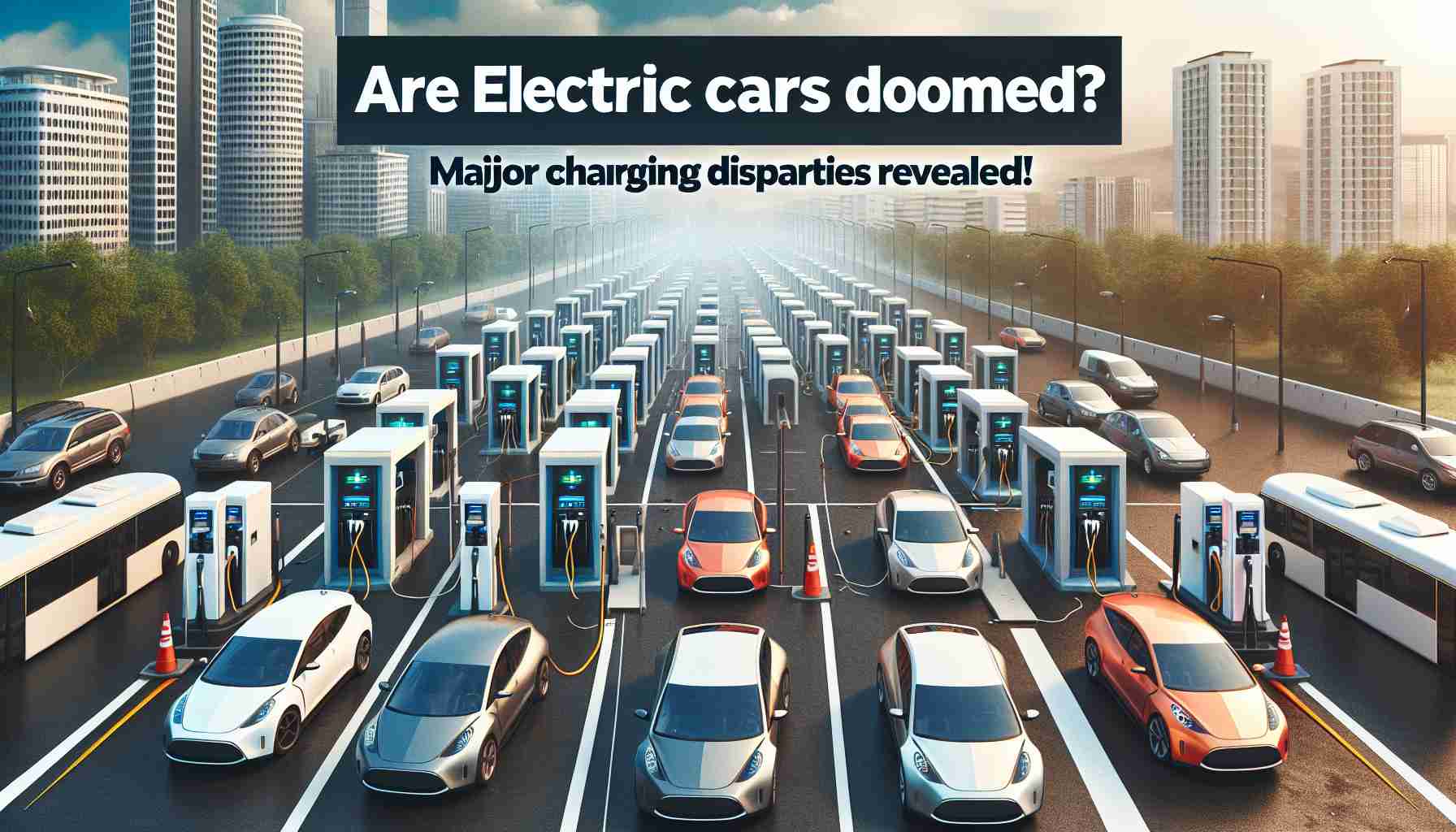
The UK’s electric vehicle (EV) transition is facing significant hurdles due to stark differences in charging point accessibility, especially in economically disadvantaged regions. A new report from consultancy Stonehaven highlights that with advancements in battery technology, the challenge of adopting electric vehicles has shifted towards urban planning and social equity.
London’s charging landscape illustrates this issue, showing a severe imbalance in charging point distribution among boroughs. In Harrow, for instance, there are only 63 chargers available, while neighboring Westminster boasts nearly 2,700. This disparity affects those with lower incomes, who may benefit most from switching to electric vehicles.
In outer boroughs like Bexley and Havering, the situation is particularly bleak for the transport sector, with only 260 chargers available for 14,000 workers. Conversely, a more central borough has 2,600 chargers for just 3,000 transport workers. The problem is further exacerbated by the high costs associated with public charging, which can be significantly more expensive than home charging—a crucial factor for those without off-street parking.
This situation poses challenges for broader EV adoption, raising concerns about social fairness. Although government subsidies have encouraged EV uptake, the lack of reliable infrastructure threatens to slow progress. The report urges that immediate attention is needed to make EVs accessible to all households, not just those in affluent areas where charging facilities are abundant.
Addressing the EV Charging Gap: A Roadmap for Inclusive Adoption
The Electric Vehicle (EV) Landscape in the UK: A Need for Equity
The ongoing transition to electric vehicles (EVs) in the UK is essential for achieving sustainability goals, but significant obstacles remain, particularly related to charging infrastructure. A recent report from consultancy Stonehaven has shed light on the urgent need for urban planning reforms and equitable access to EV charging points, especially in economically disadvantaged areas.
Disparities in Charging Point Distribution
London presents a striking example of the current disparities in charging infrastructure. A notable variance in the number of charging stations exists between different boroughs. For instance, Harrow has only 63 chargers, while its affluent neighbor Westminster has nearly 2,700. Such imbalances pose particular challenges for lower-income individuals who could benefit the most from transitioning to electric vehicles, thus further entrenching social inequities.
Impact on Outer Boroughs
The situation is even dire in outer boroughs like Bexley and Havering, which host approximately 14,000 transport workers but only 260 available charging points. In contrast, a central borough can provide 2,600 chargers for just 3,000 workers. This stark difference not only hampers the convenience of owning an EV but also affects work-related travel, compounding the issue for those already facing economic challenges.
Economic Barriers to Charging Access
Another critical aspect to consider is the economic disparity in public vs. at-home charging costs. Individuals without off-street parking may find public charging options prohibitively expensive, further deterring them from adopting electric vehicles. The high costs associated with public charging reveal a system that favors those in affluent areas equipped with private parking and home charging units.
Government Initiatives and Subsidies
Despite government incentives aimed at promoting EV adoption, the lack of a reliable and equitable charging infrastructure remains a significant hurdle. The report from Stonehaven urges policymakers to focus their efforts on creating a more inclusive EV landscape, emphasizing that not just affluent households should benefit from the advancements in EV technology.
Pros and Cons of the Current EV Charging Infrastructure
Pros:
– Decreased Pollution: A broader adoption of EVs can lead to reduced emissions.
– Government Support: Various subsidies and incentives to buy EVs are readily available.
Cons:
– Inequitable Access: Significant disparities in charging point availability across different regions.
– Public Charging Costs: Higher prices for public charging discourage low-income households from transitioning to EVs.
Recommendations for Progress
1. Enhanced Urban Planning: Local governments should prioritize the installation of charging points in under-served neighborhoods.
2. Financial Support Programs: Introducing more subsidies specifically targeted at low-income households could facilitate EV adoption.
3. Public-Private Partnerships: Encouraging collaborations between the government and private companies could boost investments in infrastructure.
Future Trends in EV Adoption
As battery technology and charging solutions continue to innovate, the future of EVs looks promising. However, success will heavily depend on rectifying current injustices in charging access. Greater focus on inclusive policies will ensure that all communities can participate in the electric vehicle revolution.
Conclusion
The UK’s push for electric vehicles must transcend technological advancements. Addressing the stark disparities in charging point distribution is crucial for fostering an equitable transition to sustainable transport. Only through strategic planning and focused investment can we ensure that the benefits of electric vehicles reach every household, thus building a more inclusive future for all.
For more insights on the EV market and sustainability trends, check out Sustainable Transport.



